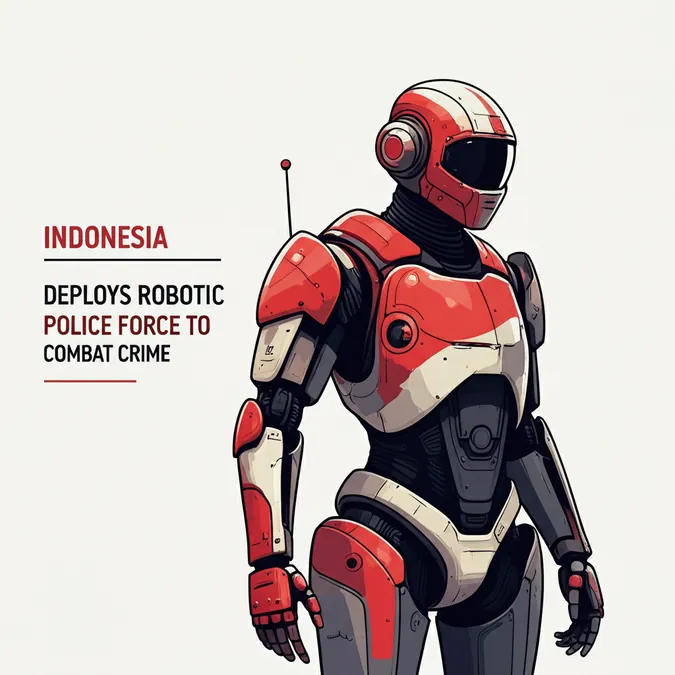Developer Offer
Try ImaginePro API with 50 Free Credits
Build and ship AI-powered visuals with Midjourney, Flux, and more — free credits refresh every month.
Sakana AI Unlocks Collaborative AI Dream Teams

Japanese AI lab Sakana AI has unveiled a groundbreaking technique that enables multiple large language models (LLMs) to function as a cohesive team. This method, detailed in a paper on Multi-LLM AB-MCTS, allows different models to collaborate, perform trial-and-error, and leverage their individual strengths to tackle problems too complex for a single AI.
For businesses, this represents a significant shift. Instead of relying on a single AI provider, companies can now orchestrate a team of specialized models, assigning the right AI to the right part of a task to achieve superior performance and more robust solutions.
The Power of Collective Intelligence
Frontier AI models are advancing at an incredible pace, but each one possesses unique strengths and weaknesses based on its architecture and training data. One model might be a coding prodigy, while another excels at creative prose. Sakana AI's researchers see this diversity not as a flaw, but as a powerful feature.
“We see these biases and varied aptitudes not as limitations, but as precious resources for creating collective intelligence,” the researchers explained in their blog post. They draw a parallel to human innovation, where diverse teams consistently produce the greatest achievements. “By pooling their intelligence, AI systems can solve problems that are insurmountable for any single model.”
Thinking Smarter at Inference Time
Sakana AI’s algorithm is a form of “inference-time scaling,” a research area focused on boosting a model's performance by allocating more computation after it has been trained. This contrasts with the more common “training-time scaling,” which involves building larger models and using more data.
Other inference-time techniques include prompting models for longer chain-of-thought reasoning or using repeated sampling to brainstorm multiple solutions. Sakana AI’s method elevates these concepts.
“Our framework offers a smarter, more strategic version of Best-of-N (aka repeated sampling),” Takuya Akiba, a research scientist at Sakana AI, told VentureBeat. “By dynamically selecting the search strategy and the appropriate LLM, this approach maximizes performance within a limited number of LLM calls, delivering better results on complex tasks.”
How Adaptive Branching Search Works
The technology is powered by an algorithm called Adaptive Branching Monte Carlo Tree Search (AB-MCTS). This method allows an LLM to conduct an intelligent trial-and-error process by balancing two strategies: “searching deeper” to refine a promising solution, and “searching wider” to generate entirely new ideas. It uses Monte Carlo Tree Search (MCTS), the same decision-making algorithm used by DeepMind’s legendary AlphaGo.
 Different test-time scaling strategies. Source: Sakana AI
Different test-time scaling strategies. Source: Sakana AI
The Multi-LLM version takes this a step further. It not only decides what to do next (refine or generate) but also which LLM is best for the job. The system learns on the fly, initially testing a mix of models and then allocating more work to those that prove most effective for the specific task.
Putting the AI ‘Dream Team’ to the Test
The researchers benchmarked their Multi-LLM AB-MCTS system on the notoriously difficult ARC-AGI-2 benchmark, which tests human-like visual reasoning. They assembled a team of frontier models, including o4-mini, Gemini 2.5 Pro, and DeepSeek-R1.
The results were striking. The AI collective solved over 30% of the test problems, a score that far surpassed what any of the models could achieve individually.
 AB-MCTS vs. individual models. Source: Sakana AI
AB-MCTS vs. individual models. Source: Sakana AI
More impressively, the team observed models collaborating to solve problems that were previously impossible for any single one. In one instance, o4-mini produced a flawed solution. The system then passed this incorrect attempt to DeepSeek-R1 and Gemini-2.5 Pro, which successfully identified the error, corrected it, and arrived at the right answer.
 AB-MCTS can select different models at different stages of solving a problem. Source: Sakana AI
AB-MCTS can select different models at different stages of solving a problem. Source: Sakana AI
This collaborative approach also has major implications for mitigating AI hallucinations. “By creating an ensemble with a model that is less likely to hallucinate, it could be possible to achieve the best of both worlds: powerful logical capabilities and strong groundedness,” Akiba noted.
From Research to Real-World Applications
To empower developers to use this technique, Sakana AI has released the core algorithm as an open-source framework called TreeQuest. Available under a commercial-friendly Apache 2.0 license, TreeQuest provides a flexible API for implementing Multi-LLM AB-MCTS on custom tasks.
Akiba mentioned that beyond the benchmark, the team successfully applied the method to complex algorithmic coding and improving machine learning model accuracy. “AB-MCTS could also be highly effective for problems that require iterative trial-and-error, such as optimizing performance metrics of existing software,” he said. The release of this practical tool could usher in a new era of powerful and reliable enterprise AI applications built on collective intelligence.
Compare Plans & Pricing
Find the plan that matches your workload and unlock full access to ImaginePro.
| Plan | Price | Highlights |
|---|---|---|
| Standard | $8 / month |
|
| Premium | $20 / month |
|
Need custom terms? Talk to us to tailor credits, rate limits, or deployment options.
View All Pricing Details

